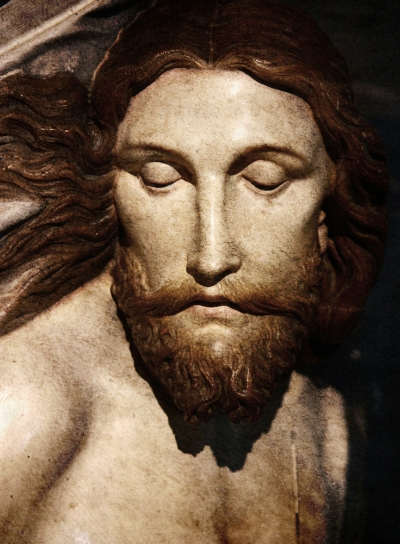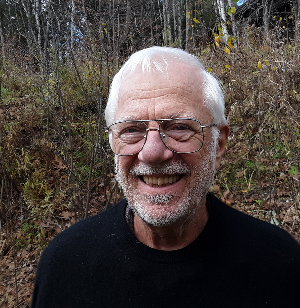A Spiritual Thought Experiment: Saving Jesus from God’s Plan – Part 2
Part Two

You may remember from Part One of this thought experiment the four visitors who dropped in on a church one Sunday morning. A college student, parents of young children, a woman who had left religion a long time ago, and an elderly person. After being disappointed by a Good Friday service, after which they researched the crucifixion of Jesus – and learned a lot – they decided to hear what the preacher had to say on Easter, a day when lots of people who don’t normally go to church go to church. It is perceived as the highest and holiest of days in the Christian calendar. Not one of the four opted for the sunrise service. 10 o’clock was just fine. There were no surprises. What they heard was the traditional Easter message that is pretty much the same around the world. Although there are confusions and inconsistencies, the basic story is this: Jesus’ body had been put in a tomb with a big rock blocking the entrance. When a few of the women disciples go to anoint the body, the stone has been rolled away, and an angel announces that Jesus is risen. The women then run to tell the men. A story so universal in time and in space that it presents itself to believers as unquestionable, and yet…
There are those confusions and inconsistencies. How did the women expect to move the stone so they could anoint the body? Jesus walks through walls, but Thomas touches the wounds on his hands. He walks with disciples, but they do not recognize him until they eat fish together. The four visitors, researching again, came across a variety of explanations for the various elements of the story. For example, “doubting Thomas” had to physically touch Jesus in order to believe, but blessed are those who believe without touching. The essence of the narrative, however, stood out in believers’ minds as undeniably historical: the tomb was empty. Jesus had physically risen from the dead. This seemed to be the irrefutable heart of Christianity.
But research uncovered two problems. The first is that if indeed Jesus had been crucified before he even entered the city, there would have been no body to bury. Horrifying as it is, the bodies of crucifixion victims were left for scavenging animals. The fact is that for the tens – if not hundreds – of thousands whom the Romans crucified, we have found only one intact skeleton. The others were devoured.
The second problem has to do with the simple fact that not everyone transformed by Jesus stayed with him and the family he had gathered. They moved on. They felt as though they had been reborn, and they wanted to share that new life with others. Some of these people formed a community that we refer to as the Q group, and another formed around a gospel that we call Thomas. The searchers found a lot of material describing these sources, but the most startling was that because these communities were inspired by Jesus, had left him and did not know his fate, they were oblivious to the concept that Jesus’ death was the sacrificial essence of God’s plan of salvation. They had no idea that “Jesus had died for their sins”. The physical death and resurrection of Jesus was simply not part of their understanding. The Spirit of Jesus went with them wherever they went, while he was alive as well as after he was crucified. Their inspiration was not found in a sacrificial death followed by an empty tomb, it was in a new way of life created and sustained by a Spirit and Power that they did not understand but that they believed they had most certainly experienced.
What then of the empty tomb narratives that we find in the biblical gospels? Where did they come from? Eyewitness reports from the actual disciples? Possible, but most doubtful. Mark is dated 67 CE, and Matthew and Luke 25 years later, so there was plenty of time for revision to infiltrate the story. It is certainly quite possible, if not probable, that the gathered family that lived with Jesus experienced the same inspiration and new life that was experienced by those who moved on, such as Q and Thomas, and had nothing to do with an empty tomb. The researchers did find one theologian who proposed that the empty tomb narrative was created by the rich and powerful who had been attacked by Jesus. Think about it. Followers of Jesus represented a movement that sought to end the system of oppression. Essential to the movement’s inspiration was the belief that the Spirit of Jesus was still with them, leading them on, a sort of continual resurrection. Confronted with this threat, the wealthy substituted for that the idea of a one-time empty tomb coupled with the assertion that the Risen Lord would return at some future undetermined date. Continual challenge to the system was replaced by quietistic “give honor to all in authority” [Timothy]. The radical message of Jesus was gone. The ideology of conservative wealth had taken over the church.
The four searchers now realized that there were two Jesus stories, one pervasive across the Christian churches, the other hidden in the background. They both involved thinking about God as part of the picture, but in drastically different ways. As they discovered the hidden story, the college student found it to make sense. Although he wasn’t sure that he believed in God, the story of a man who challenged people to live up to their true loving nature was a narrative he could follow. The two parents found comfort in realizing that they could talk about Jesus and God without the horrible notion of a sacrificial death, and instead help their children to live a life of faith that focused on loving one another. The church alumna was relieved to discover a theological framework within which she could rejoin the church that had played such a large part in her life. And the elderly woman found great comfort in understanding God as a loving God, who was never angry and wrathful, but always caring and welcoming, a God who sought the well-being of all. Now they had a story they could share.
~~~~~~~~~~~~~~
Dr. Carl Krieg received his BA from Dartmouth College, MDiv from Union Theological Seminary in NYC, and Ph.D. from the University of Chicago Divinity School. He is the author of What to Believe? the Questions of Christian Faith, The Void and the Vision and The New Matrix: How the World We Live In Impacts Our Thinking About Self and God. As professor and pastor, Dr. Krieg has taught innumerable classes and led many discussion groups. He lives with his wife Margaret in Norwich, VT.

